National Office Vacancy Rate Tightens to 10.8% As New Supply Deliveries Hold Steady
U.S. office net absorption topped 100 million square feet for the first time since the Great Recession and the national office vacancy rate declined another half-percentage point in 2015 as broadening demand and constrained levels of construction contributed to tightening space availability in virtually Every metro area.
The U.S. office vacancy rate declined from 11.3% in 2014 to 10.8% at the end of 2015, continuing its downward trend from the 13.2% vacancy rate at the worst of the economic downturn, according to data presented at CoStar’s recent State of the U.S. Office Market 2015 Review and Forecast.
Vacancies declined in 64% of the nation’s office submarkets and 56% of metro office markets during the fourth quarter of 2015. CoStar analysts expect office vacancy to continue trending lower to approximately 10% in 2017.
“The market is overwhelmingly strong at this point in the cycle. With the momentum in the market, I’m sure the next quarter will also be strong,” said Hans Nordby, managing director of CoStar Portfolio Strategy, who presented the findings along with CoStar Director of Office Research Walter Page and Vice President and Research Director Dean Violagis.
The strong metrics fueled a white-hot investment market, with preliminary office asset sales up nearly 18% in 2015 to $152 billion, Violagis said.
Atlanta, Miami and Nashville were among the markets showing the largest annual vacancy improvement. Each showed larger vacancy decreases than San Francisco, Seattle and Boston, demonstrating a momentum shift in office market strength from the technology and energy metros that have driven the economy’s recovery and expansion to markets that suffered during the recession era housing bust. San Francisco’s vacancy rate declines showed evidence of slowing in the fourth quarter as new office supply began to enter the market, Page said.
Unsurprisingly, Silicon Valley markets posted the strongest annual occupancy gains. That said, 8 of the 13 markets with the highest year-over-year changes in occupancy are not driven by either energy or technology, much different than just a year ago, Nordby said. “Big-tenant markets like Atlanta and Dallas are doing well. It’s their turn,” he said.
While consumers are enjoying lower prices at the gas pump, some parts of the U.S. and parts of the economy are feeling pressure from global economic volatility along with falling energy prices and their ripple effect in equities markets, Nordby said. The S&P 500 has fallen about 11% since peaking last May, due in part to the weakness in energy-related stocks.
Tech Sector Warning Signs
Technology stocks are down more than 10%. Large companies such as Apple and Samsung Electronics last week warned that global economic turbulence and declining demand will slow the tech sector during 2016.
On Tuesday, Sunnyvale, CA-based Yahoo’ CEO Marisa Mayer announced plans to eliminate another 1,700 jobs, or 15% of its workforce; along with other measures such as the sale of surplus real estate and closing of five global offices. Yahoo will also explore “strategic alternatives” to potentially sell or spin off its core search engine and web portal business. The company last month was reportedly marketing a 48-acre parcel originally slated for expansion in Silicon Valley near Levi Stadium in Santa Clara.
“Tech is volatile. It feels good until it doesn’t’ feel good at all,” Nordby said, adding that it’s unclear at present when or if lower private and public market valuations might affect hiring in high-tech bastions such as San Jose, San Francisco, Boston, Raleigh, Austin and Seattle.
However, the strong momentum from last year’s strong showing in the office sector and throughout commercial real estate markets is expected to carry well into 2016, the CoStar economists said.
Annual net absorption of office space increased to 101 million square feet in 2015, compared with 93 million square feet in 2014, while developers delivered 64 million space feet, a 41% increase over the previous year. The amount of new space under construction, which has trended downward in the last couple of quarters, stood at 126 million square feet at year end, a modest 7% increase from a year ago, and near the historical yearly average since 2000.
2015’s 4.4% annual rent growth topped the previous year’s growth of 3.8%, with rents surging at a particularly strong rate in CBDs such as San Francisco at 19.4% and Raleigh, NC at 13.9%. Even in the urban core of Atlanta and Detroit, rents in the urban core rose at 11.2% and 10.5%, respectively.
By Randyl Drummer
February, 2016
